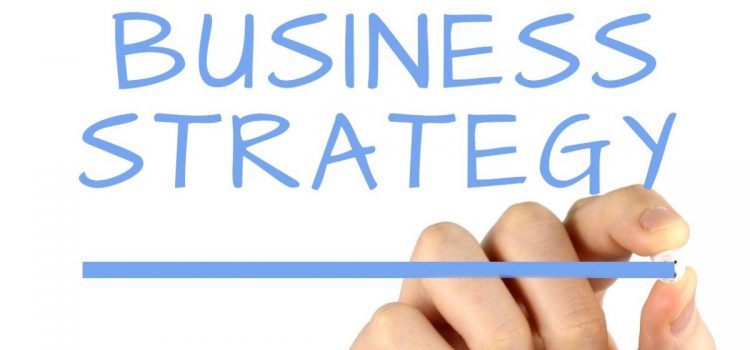

This article is an excerpt from the Shortform book guide to "Lead From the Future" by Mark W. Johnson and Josh Suskewicz. Shortform has the world's best summaries and analyses of books you should be reading.
Like this article? Sign up for a free trial here.
Does your business have an innovation roadmap? Do you have a growth target and a plan to reach it?
In Lead From the Future, business strategists Mark W. Johnson and Josh Suskewicz walk you through the creation of your business’s vision. Then, they provide three steps to convert that vision into a strategy that will bring your vision to life.
Read more to learn how to create a business strategy with Johnson and Suskewicz’s advice.
How to Create a Business Strategy
According to the authors, your strategy contains three connected components (which they call portfolios): your long-term financial picture of your business, innovation roadmap, and resource plan. These components are interdependent and respond to change. So, you must look at all three together to get a holistic view of your visionary plan and update each component as new insights emerge.
Here’s Johnson and Suskewicz’s advice on how to create a business strategy.
Step 1: Develop a Long-Term Financial Picture of Your Business
Developing a long-term financial picture helps you estimate the revenue and profits your future vision will likely yield. To develop this component of your visionary strategy, you must first identify a growth target that aligns with your future vision, then calculate what the authors call your growth gap and figure out when your growth gap is likely to develop.
Your growth target is an aspirational revenue and profit benchmark for your company at your target time horizon (for example, your growth target could be to increase your revenue by a certain percentage over the next decade). When identifying a growth target, consider the different areas in which you could pursue growth. You can improve or change your core product or offer supplements to the core product. You might also develop all new products.
(Shortform note: In Blitzscaling, Reid Hoffman argues that online businesses do not benefit from engaging in time-consuming computations about aspirational revenue goals and potential areas of growth. This is because such an approach could potentially place you in a disadvantageous position due to rapidly changing market dynamics, rendering your product outdated. Reid explains that growing quickly as an internet-based business requires that you move quickly and that taking a cautious, calculating approach can quickly make you lose ground amongst your competitors or make your company obsolete.)
After selecting an ambitious but practical growth target, discuss and decide how much growth your core and proximate businesses can realistically deliver by your target time horizon. With this information, you can calculate your growth gap—the difference between what you aspire to deliver and what you are likely to deliver, given your current status. Knowing your growth gap helps you determine how fast and large any new innovative business ventures must be to reach your growth target.
(Shortform note: As a leader, considering your personal growth gap might also be valuable. In Daring Greatly, Brené Brown discusses a growth gap that occurs in people’s lives—a space between where you are in your life now and where you want to be. Brown explains that acknowledging this gap is crucial for personal growth and development. Rather than avoiding or dismissing the discomfort that arises from this disparity, she encourages people to explore their aspirations and the steps required to bridge the gap. By mindfully acknowledging your personal growth gap and actively working towards closing it, you can cultivate resilience and the courage to pursue your authentic desires.)
Step 2: Develop an Innovation Roadmap
Your innovation roadmap outlines the steps you need to take to achieve your growth target. This component of your visionary strategy includes your company’s core, proximate, and new growth projects and any undertakings that will develop the company’s capabilities to support growth.
The first task in creating an innovation plan is to develop a timeline. To do this, work backward from your future vision by setting progress markers at around two- to three-year intervals from then until now. For example, with a 10-year target time horizon, figure out what the company should look like and be doing in eight years, then six years, then four. At each progress marker, the authors advise you to check in about a few key aspects of the business: what core and new business initiatives need to be in progress and what new capabilities and structures need to be developed in the business to support these initiatives.
The authors stress that working backward from your future vision is crucial because otherwise, your current processes, regulations, and progress evaluation methods will blind you to innovative possibilities.
| Creating a Measurable Roadmap for Your Vision The authors tell you when to set progress markets but aren’t very specific about what aspects of your progress to check and measure. In Traction, Wickman fills that gap: He, too, advises creating 10-year goals for your business, but he recommends different benchmarks leading up to that and dives into greater detail on what to measure at those benchmarks. Let’s look at Wickman’s approach and how you might use some of his recommendations in the implementation of your innovation roadmap. Your three-year goal should include measurable targets such as revenue and profit, key metrics to achieve, and a vision of the company’s future appearance regarding team members, resources, systems, technology, products, and customers. You might measure your progress toward these targets at the eight- or six-year markers, as you’ll have had ample time to increase revenue and profit and develop a vision of the company’s future appearance. Your one-year plan should align with the three-year goal with its own revenue and profit goal, along with a one-year metric that can be used to track progress and up to seven important targets to achieve within the current year plan. You might measure your progress toward these targets at the four-year marker. Your three-month priorities should include your most important tasks for the next 90 days— for example, hiring key employees or filling critical positions. This will help your company progress and stay on track by aligning priorities among different departments and ensuring everyone is working towards the same goals. In the authors’ roadmap, it doesn’t really make sense to set such short-term priorities, as doing so would likely keep you mired in current-state thinking. |
Step 3: Develop a Resource Plan
Your resource plan outlines where you’ll invest your financial resources and human resources (such as innovation talent and leadership skills) and where those resources will come from. Developing this plan clarifies where you’ll need to cut funding, which projects to slow down, and which to continue in service of the visionary strategy.
(Shortform note: The resources that Johnson and Suskewicz mention are, in a broader sense, funded by an organization’s customers. Companies naturally recognize this and often end up resisting changes in business strategy because they become what Clayton Christensen calls resource dependent—intent only on keeping their current customer base. This makes it harder to be innovative because existing customers just want more of the same. To overcome resource dependence, he advises, as do Johnson and Suskewicz, that you create an independent entity to lead the development and marketing of disruptive products. This allows for the creation of a separate culture and cost structure that fits the innovation project.)
To begin, take stock of the resources you currently have. Then, set an appropriate investment goal for each of your company’s growth areas. Lastly, calculate how far off your target investments are from what you’re currently investing. Each growth area will have distinct expectations for growth, risk, and return, and the authors explain that you must balance these factors to optimize your investment plan.
For example, the authors explain that you will likely have to draw resources away from some initiatives to increase them in others. You may need to completely stop some of your programs because they don’t fit into your future vision—a difficult decision with a current-state thinking mindset but an easier decision with a visionary planning one.
(Shortform note: Given how complex calculating target investments for each of your company’s target growth areas could be, it may be helpful to visualize the data with innovation project tools like the ones Vijay Kumar discusses in 101 Design Methods. You might, for example, create a grid that lists growth areas in one direction and investment resources in another, which would allow you to play with different scenarios of how you might allocate resources to maximize growth.)

———End of Preview———
Like what you just read? Read the rest of the world's best book summary and analysis of Mark W. Johnson and Josh Suskewicz's "Lead From the Future" at Shortform.
Here's what you'll find in our full Lead from the Future summary:
- Why it's important to anticipate future change rather than reacting to it
- A three-stage framework for staying ahead of the competition
- How to understand and adopt the visionary planning process






